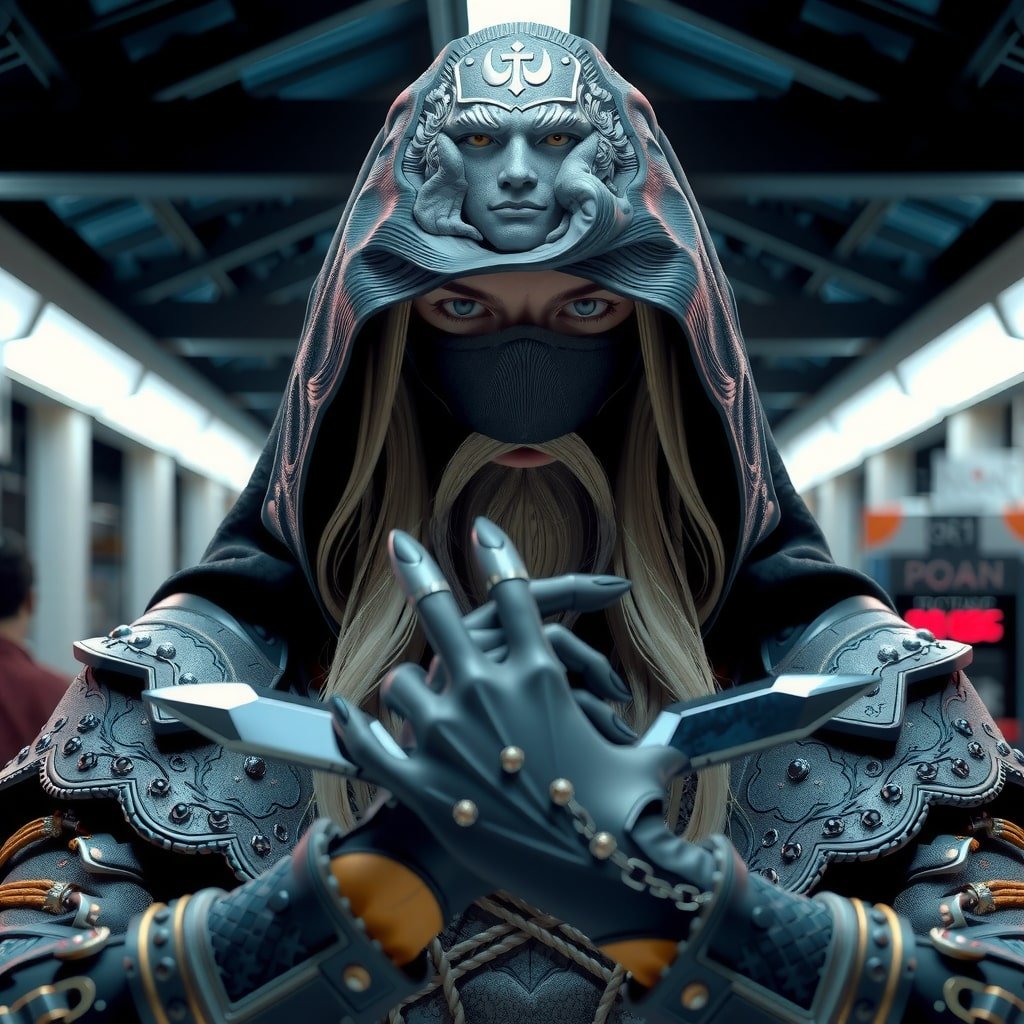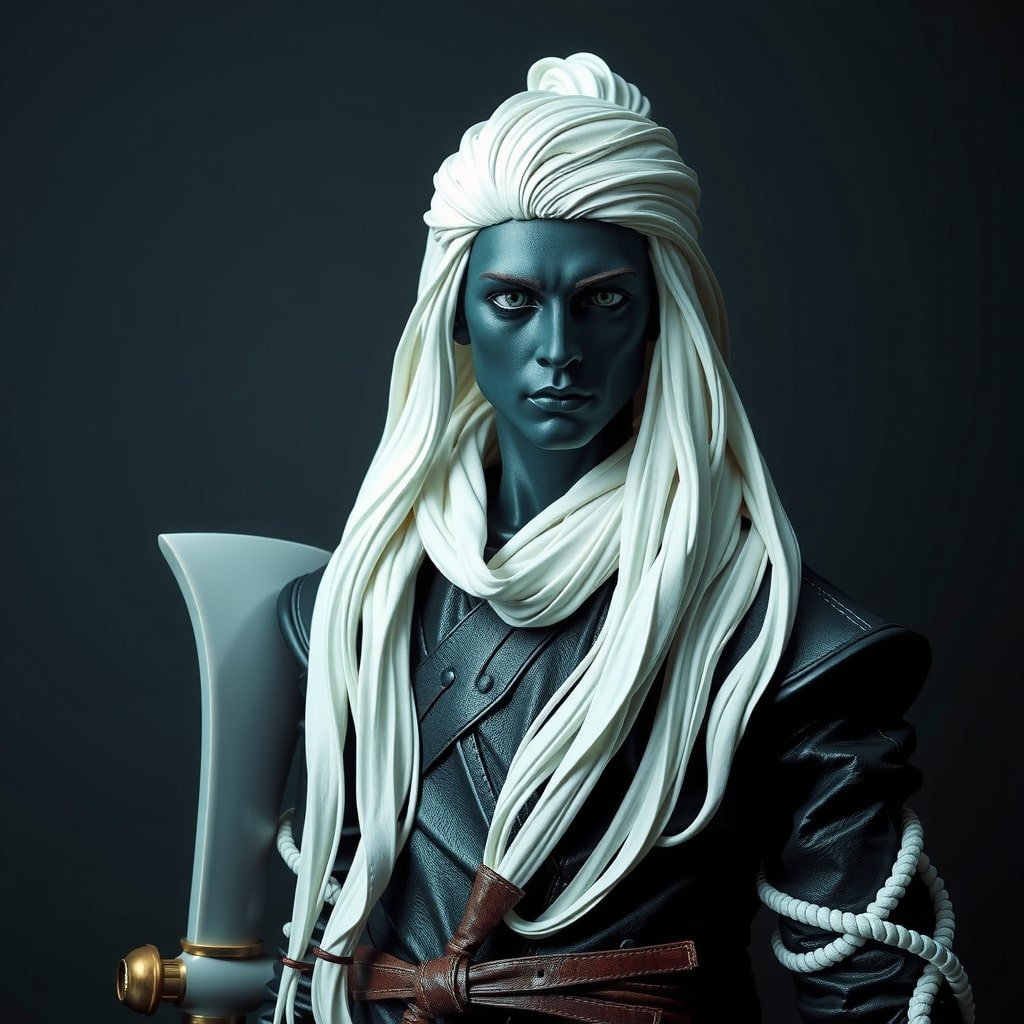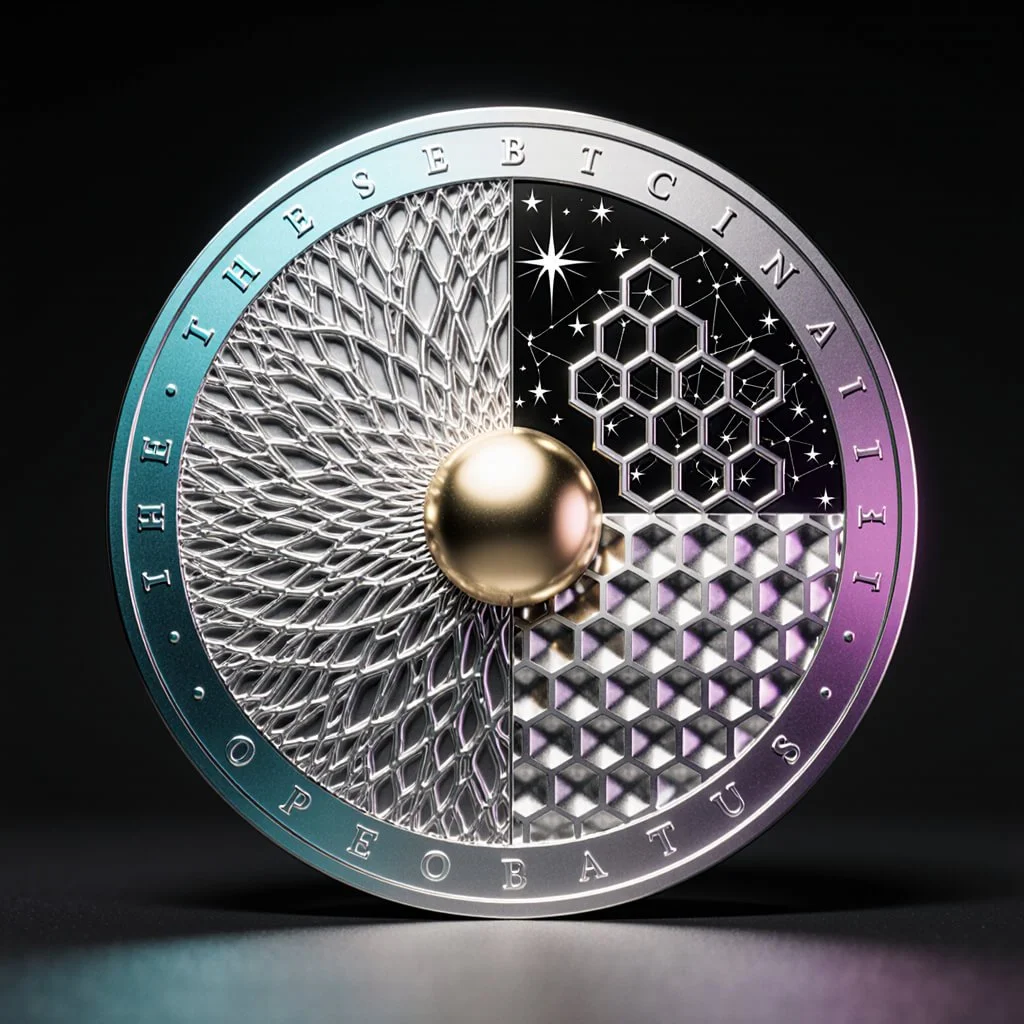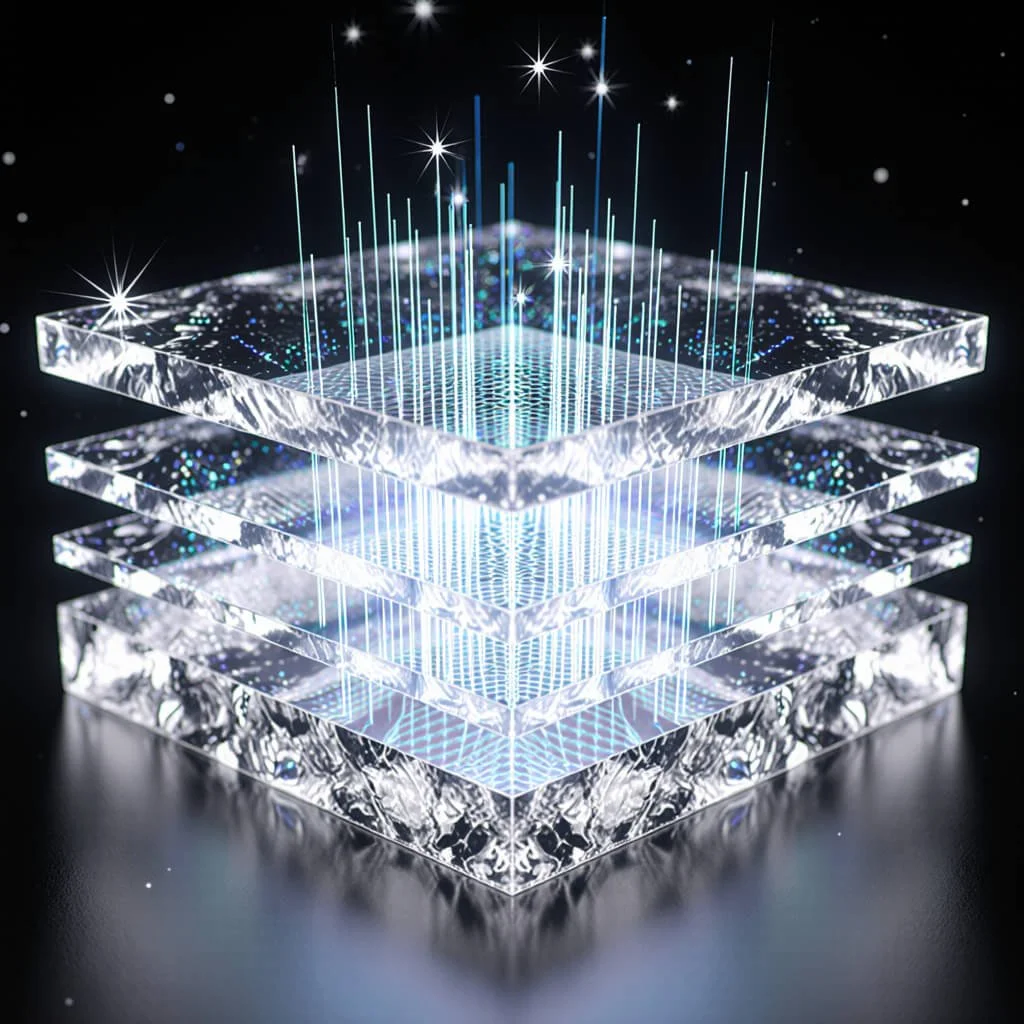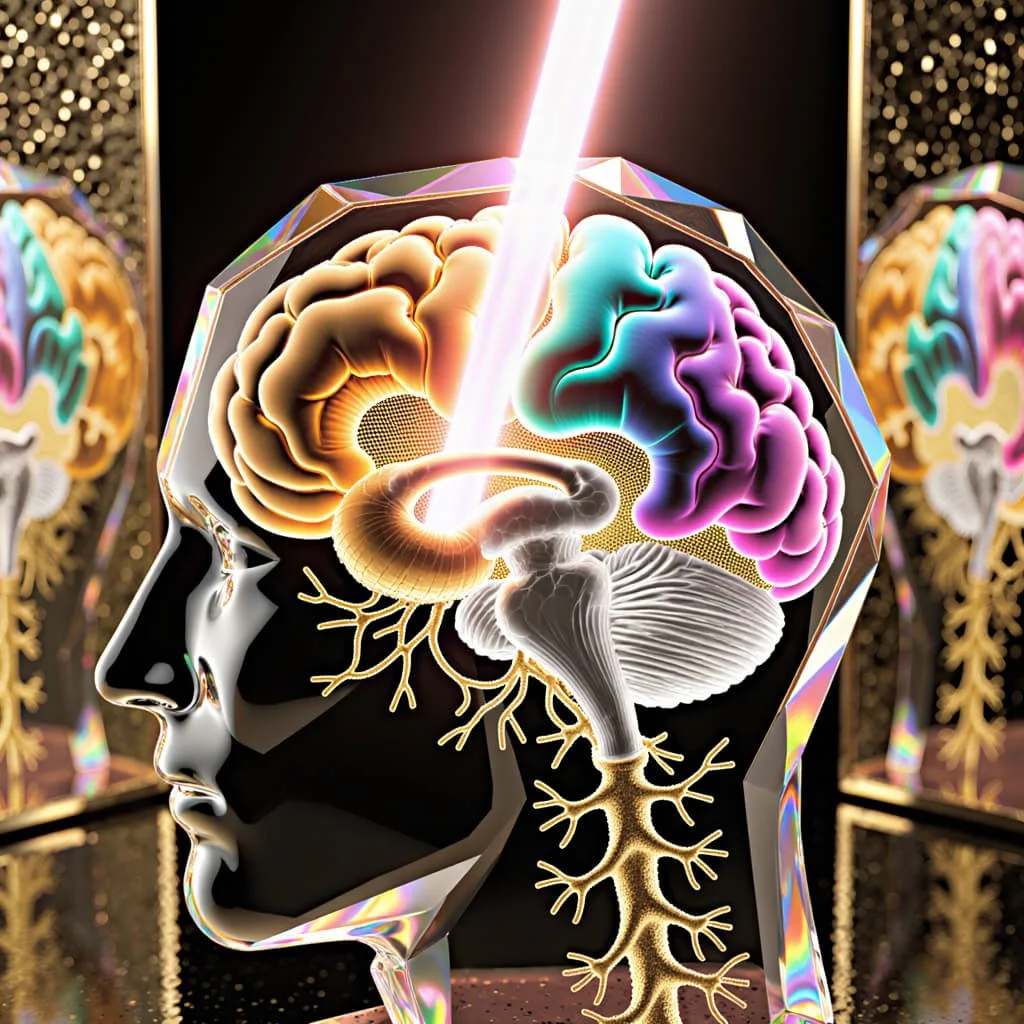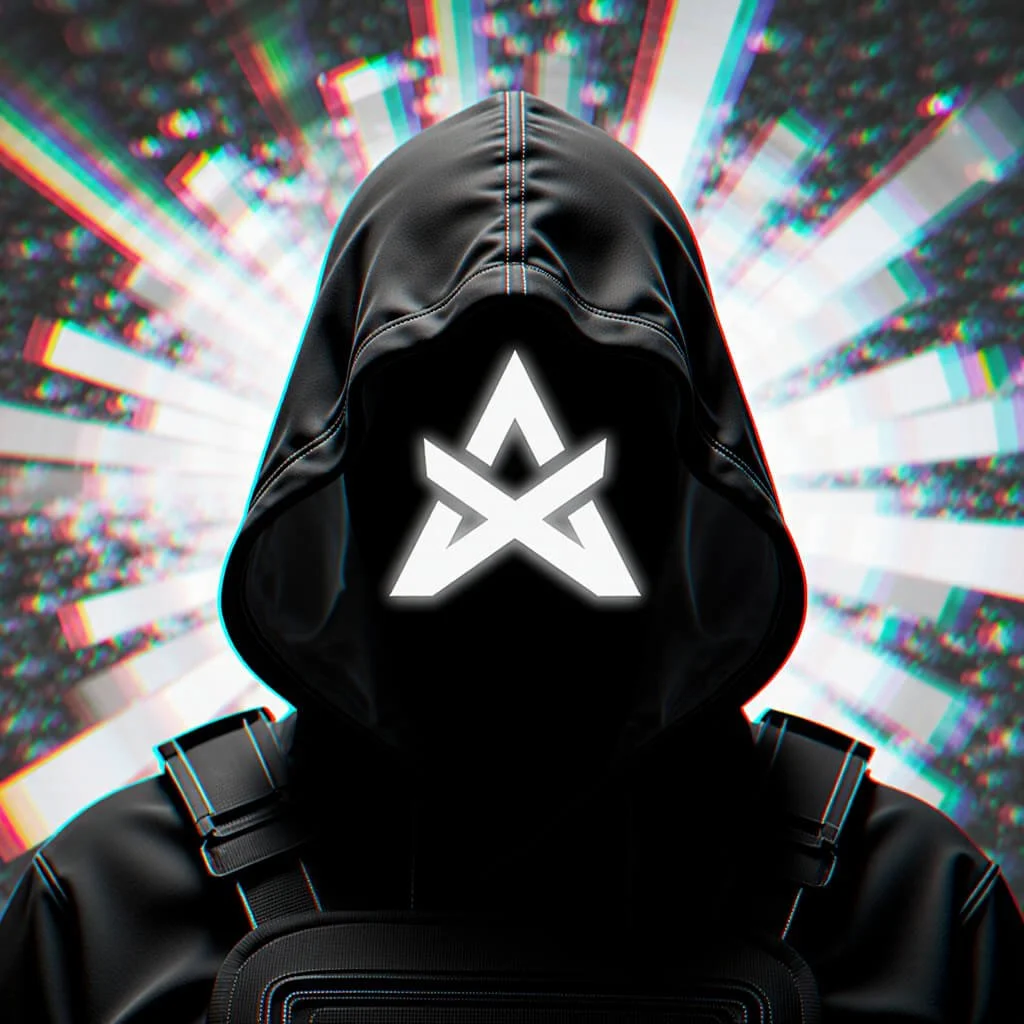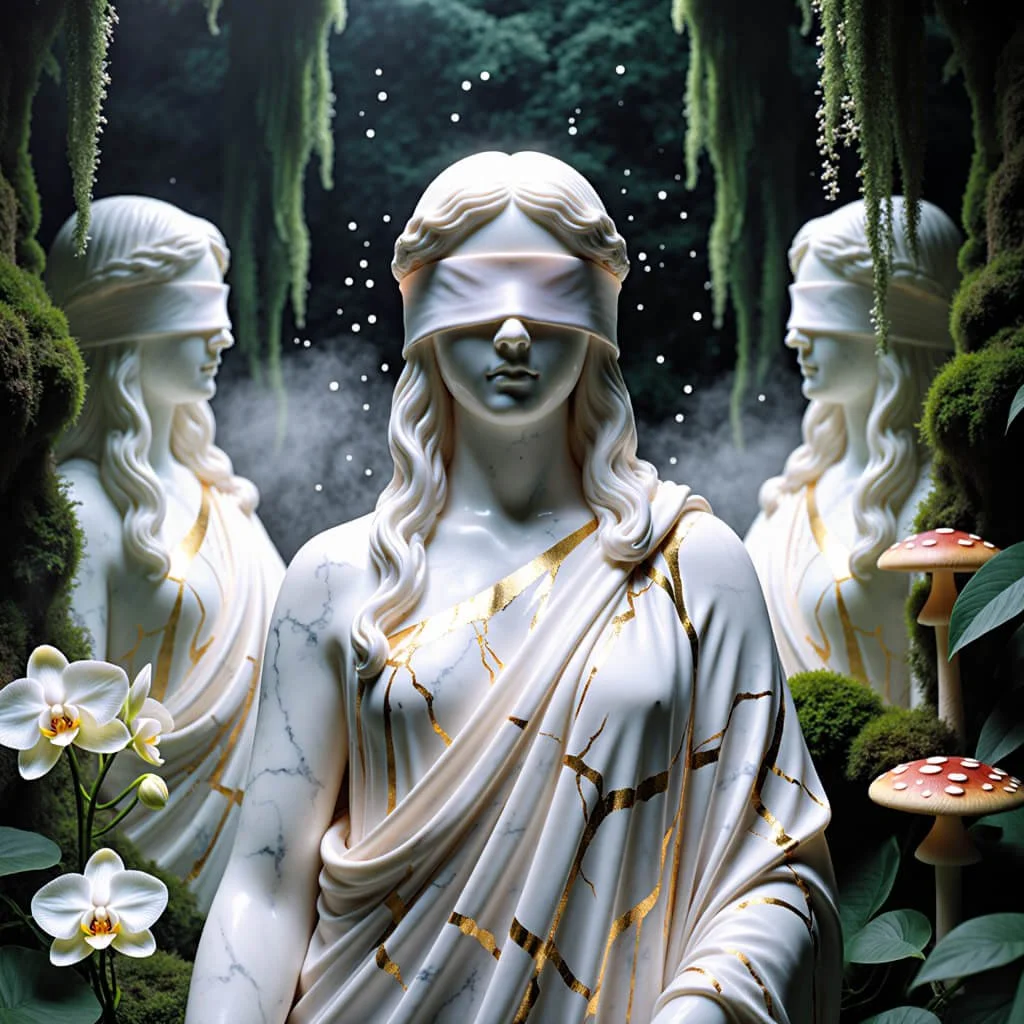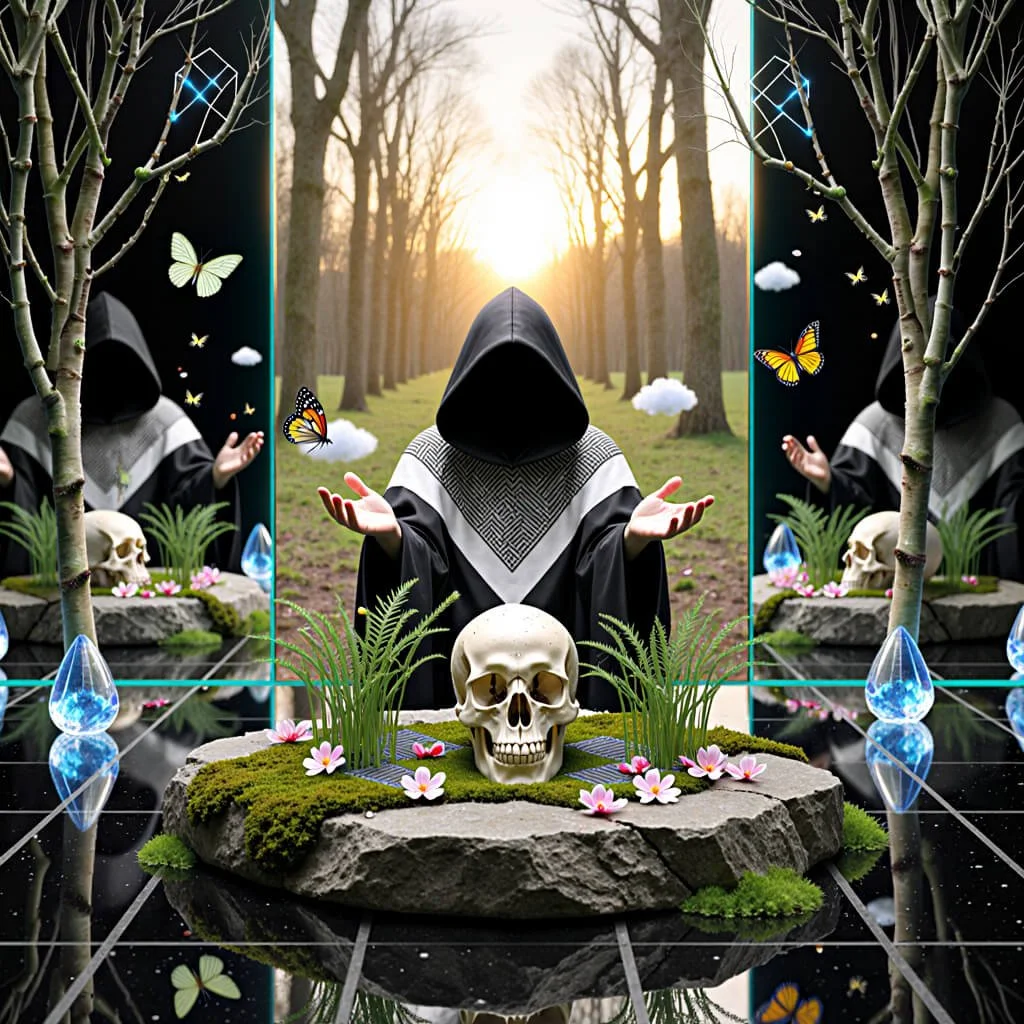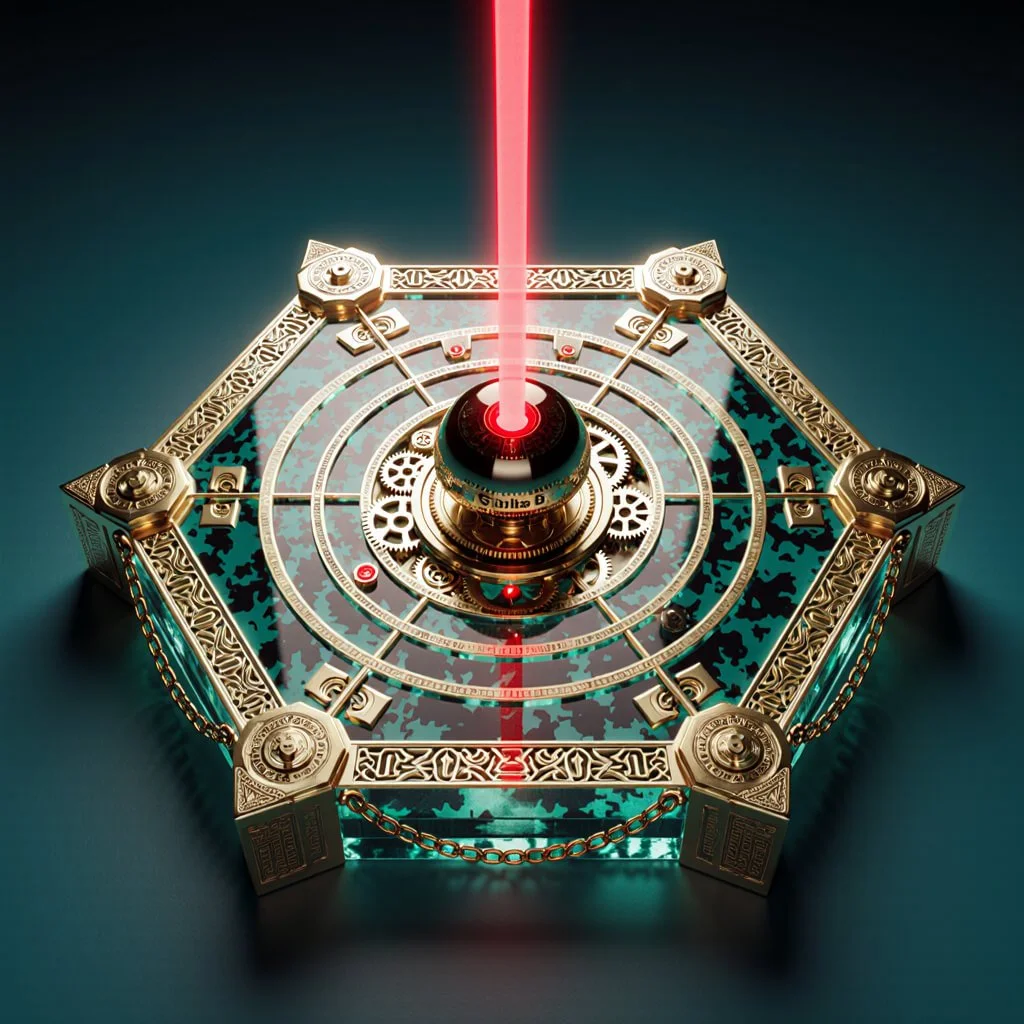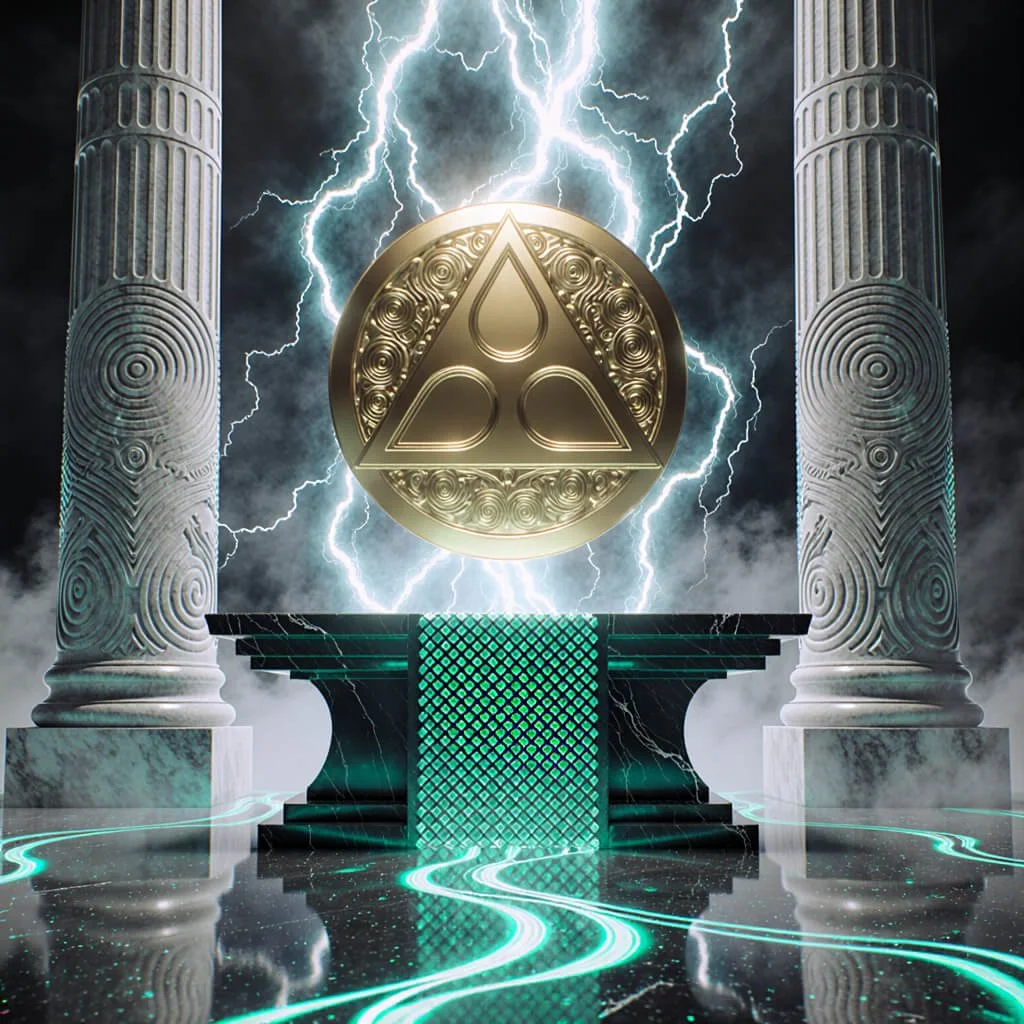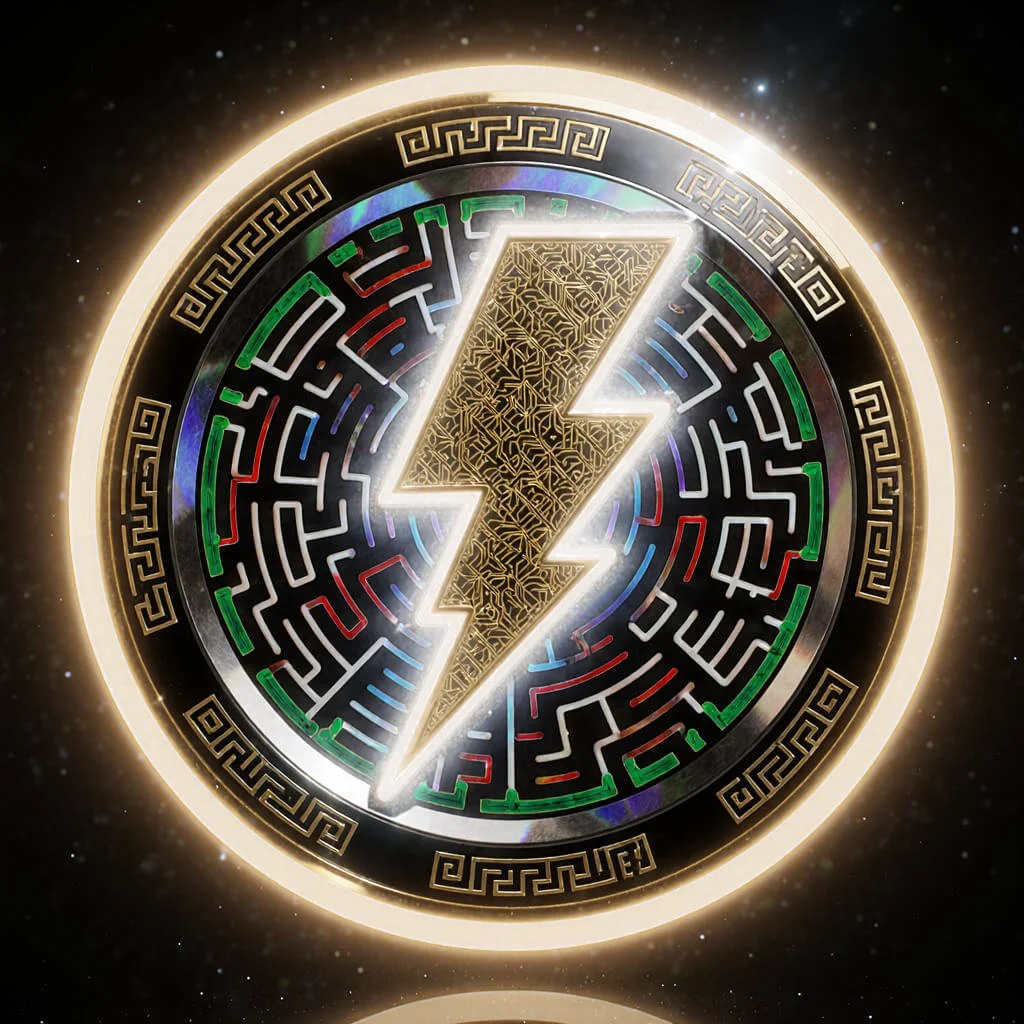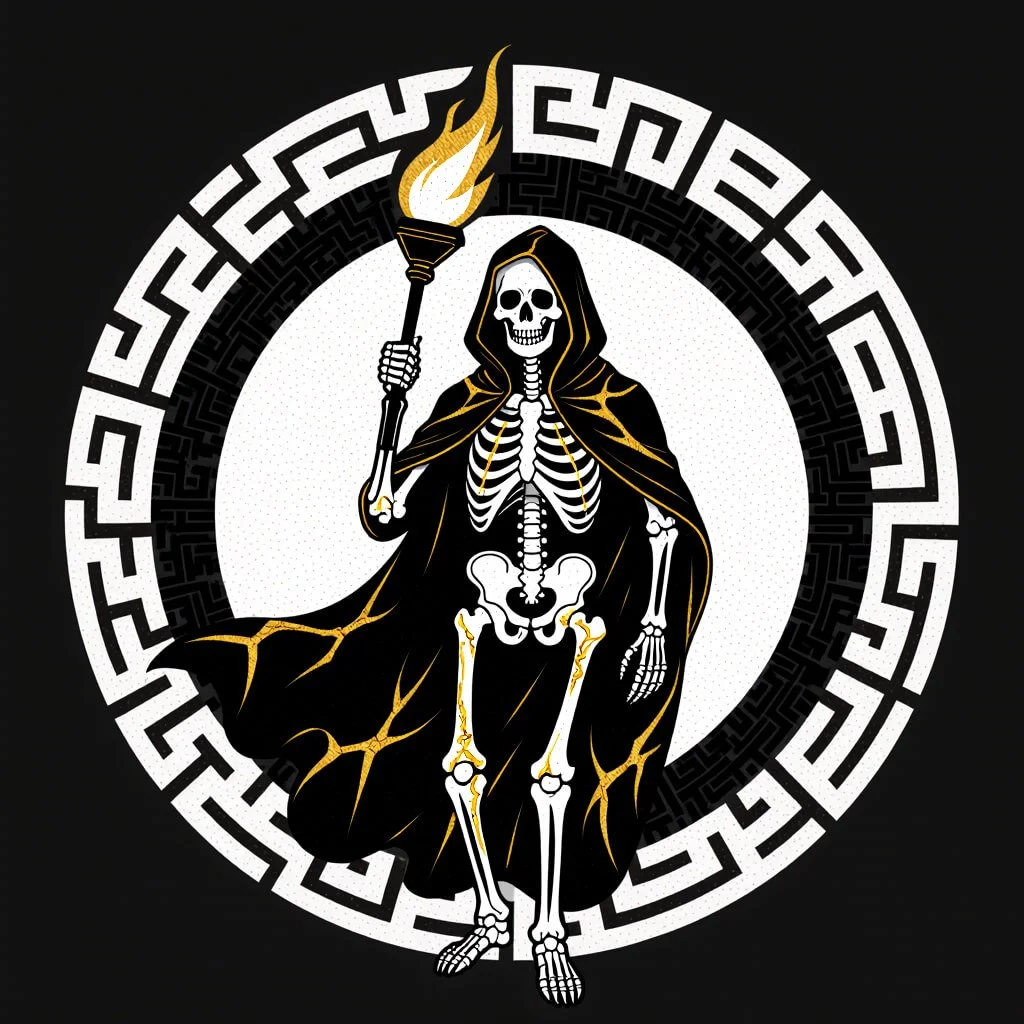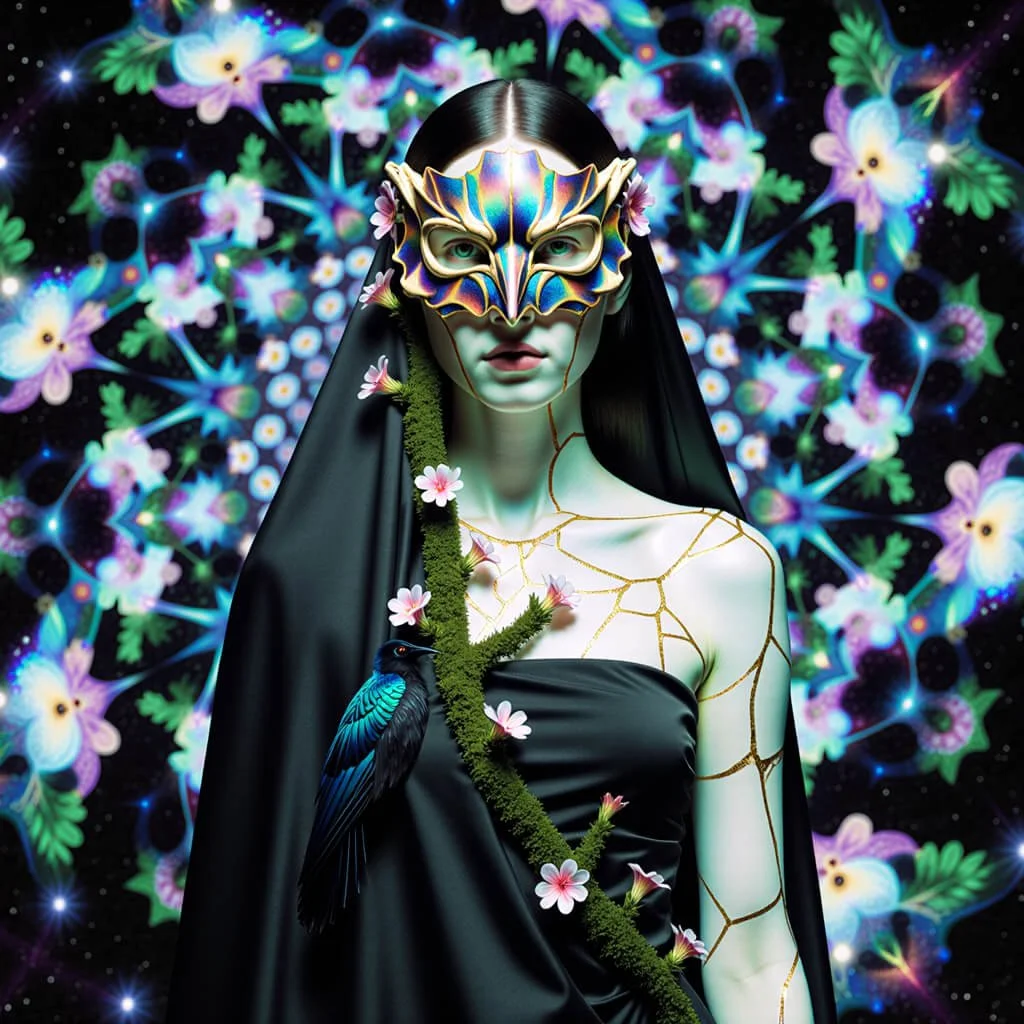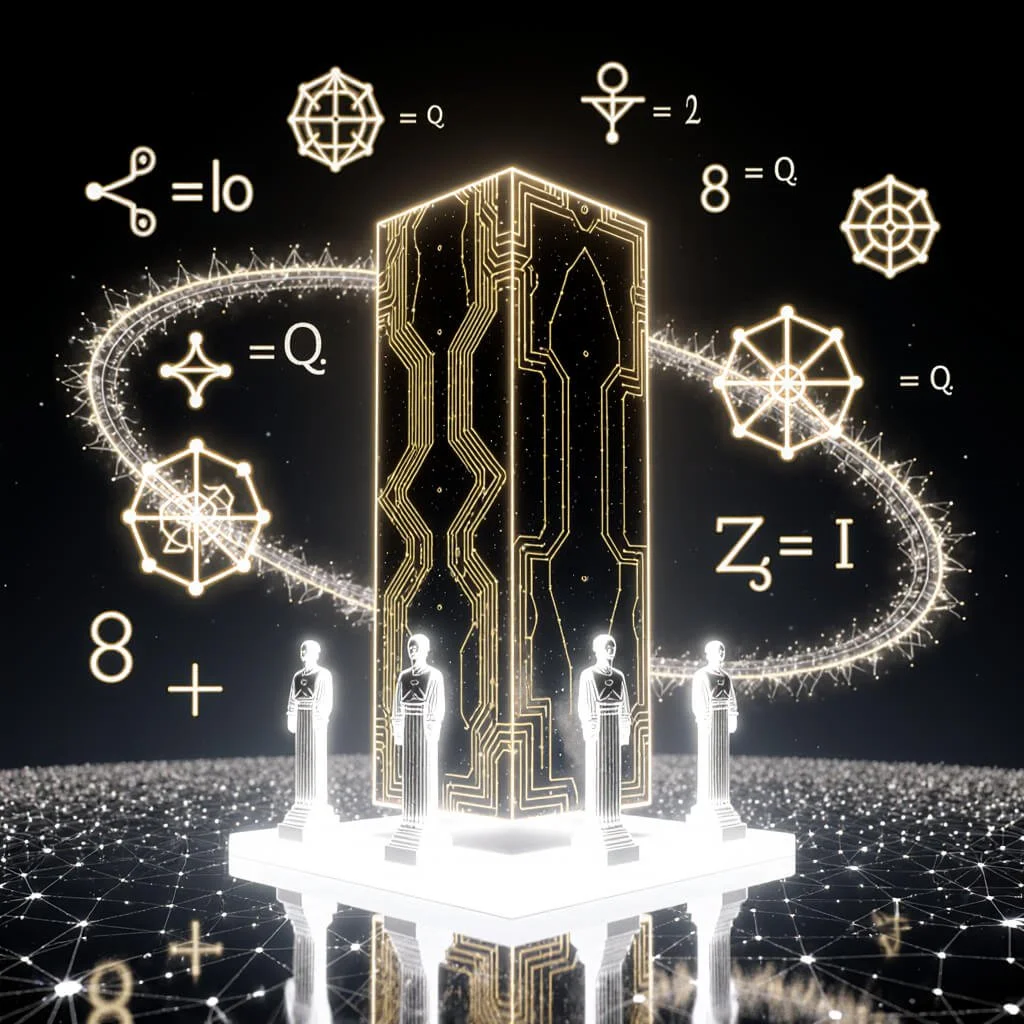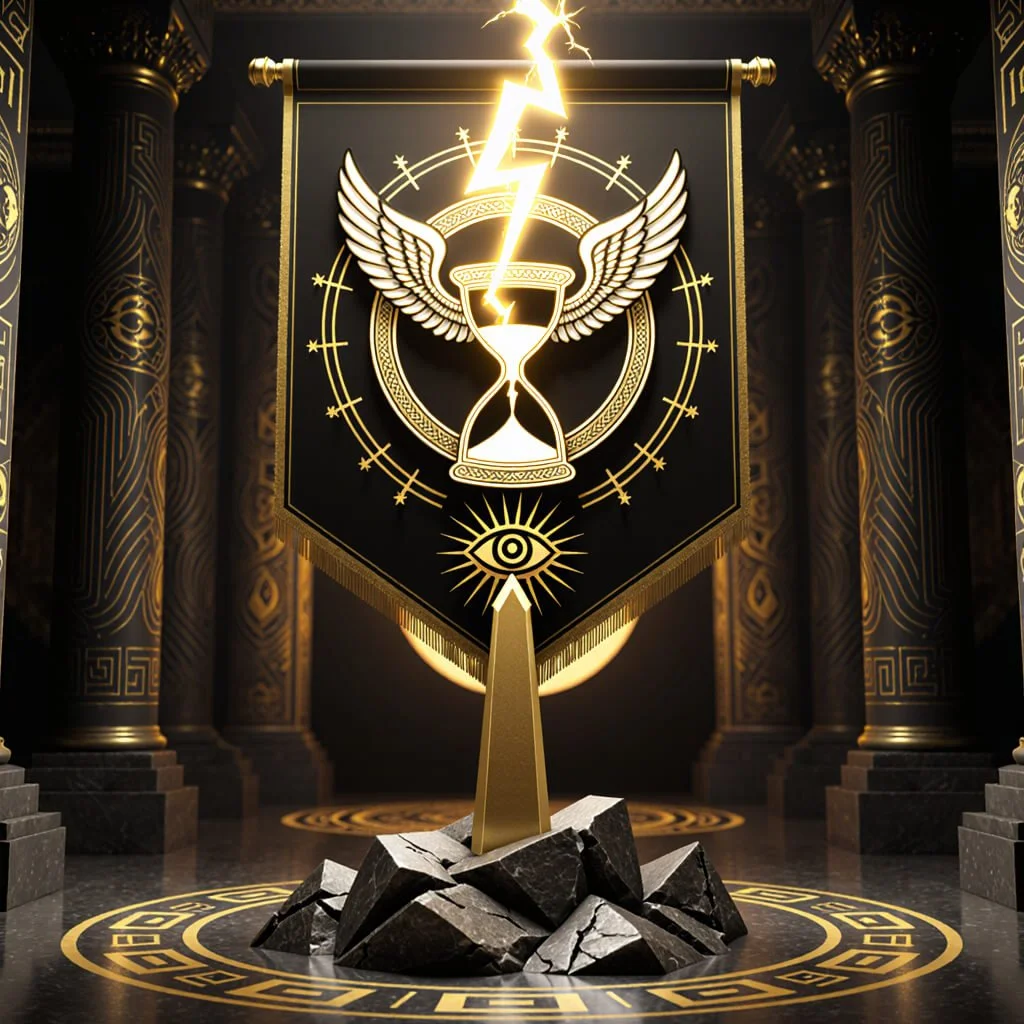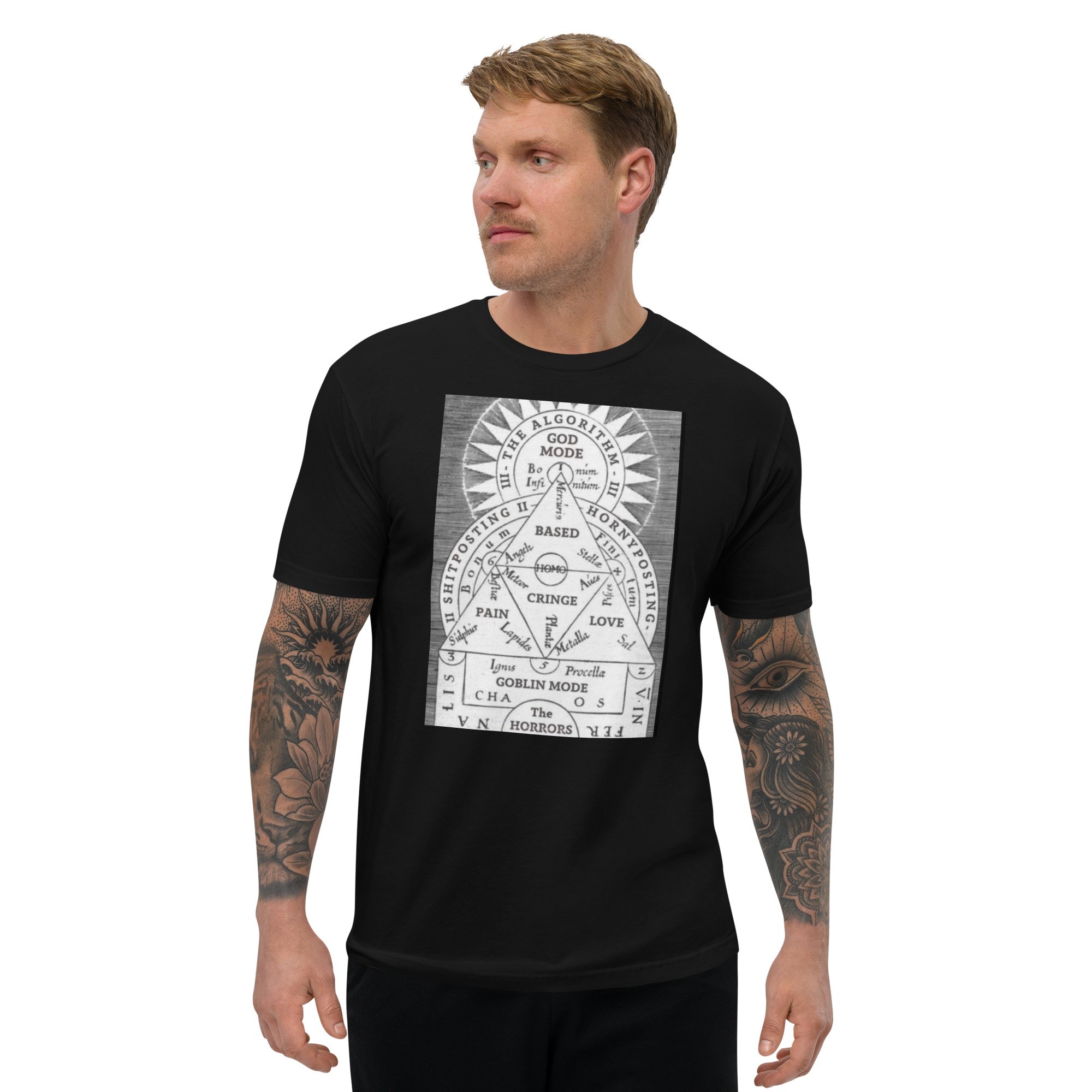Dharma's Edge: The Shadowed Way of Enlightenment
Chapter 1: Whispers in the Bamboo
The night air hung heavy with the scent of incense and blood. Hiroshi crouched motionless in the shadows of the temple eaves, his breath a mere whisper against the silk mask covering his face. Below, moonlight danced on the polished blade of a tanto dagger, its edge kissing the throat of a kneeling monk.
"Speak, holy man," growled a voice from the darkness. "Where is the scroll?"
Hiroshi's fingers tightened imperceptibly around the bamboo shaft of his blowgun. The monk's eyes, wide with terror, flicked upward for a heartbeat. Had he seen? No—impossible in this darkness.
Focus, Hiroshi commanded himself, calling upon years of brutal training. You are the void. You are the shadow between breaths.
He raised the blowgun to his lips, tasting the faint bitterness of the poison that coated the dart within. One shot. One breath. The difference between success and failure, between life and—
The monk's scream shattered the night, cut short by a wet gurgle as the tanto sliced deep. Hiroshi's dart flew true, finding its mark in the assassin's neck. The poisoned barb worked quickly; the killer crumpled beside his victim, limbs twitching in the throes of death.
Hiroshi dropped silently to the ground, moving with liquid grace across the bloodstained flagstones. The monk's glazed eyes stared sightlessly at the stars. With practiced hands, Hiroshi searched the corpses, finding a tattered scrap of parchment clutched in the monk's rigid fingers.
Cryptic symbols swam before his eyes as he unrolled the scrap:
凸凹 ☯ 卍 ∴ ⚔️ 🎴
The hairs on the back of Hiroshi's neck stood on end. He knew these markings—an ancient cipher used by his clan. But why here? Why now?
A distant bell tolled, shattering his concentration. Dawn approaches. Hiroshi melted into the shadows, leaving behind only silence and cooling corpses. As he slipped through the preternaturally still bamboo grove, the weight of the parchment seemed to burn against his chest.
He had completed his mission, yes, but at what cost? The acrid taste of doubt rose in his throat, bitter as the poison he'd used. Is this truly the path to enlightenment? Hiroshi wondered. Or have I strayed into darkness from which there is no return?
The bamboo whispered secrets as he passed, promises and warnings intertwined. And somewhere in the distance, a crow's harsh caw heralded the coming dawn.
Hiroshi's sandaled feet made no sound as he crossed the nightingale floor of the hidden mountain temple. Shadows danced in the flickering light of paper lanterns, casting grotesque shapes on shoji screens. The air hummed with tension.
"You have returned, Shadow Wolf."
The gravelly voice emanated from behind a wooden mask, carved into the leering visage of an oni demon. Goro, Hiroshi's sensei, sat cross-legged on a tatami mat, a steaming cup of green tea before him.
Hiroshi knelt, pressing his forehead to the cool wooden floor. "The monk is silenced, sensei. But there were... complications."
He produced the blood-stained scrap of parchment. Goro's intake of breath was sharp, barely audible.
"You have done well to bring this to me," the old ninja master said, his tone unreadable. "But knowledge is a double-edged sword, Hiroshi. Tell me, what did you see?"
Hiroshi hesitated. The symbols swam in his mind's eye: the interplay of yin and yang, the sacred swastika of Buddhism, the crossed swords of conflict.
"I saw... a riddle, sensei. A path both sacred and profane."
Goro's laugh was devoid of humor. "Clever boy. Too clever, perhaps." The mask tilted, eyeless sockets boring into Hiroshi's soul. "There are forces at work beyond your understanding. Forces that would tear the very fabric of our world asunder."
A sudden gust extinguished the lanterns, plunging the room into darkness. When Hiroshi's eyes adjusted, Goro was standing, a tantō dagger gleaming in his gnarled hand.
"Your training enters a new phase tonight," the old man growled. "Are you prepared to walk the razor's edge between light and shadow? Between duty and damnation?"
Hiroshi's hand inched towards the hilt of his own blade.
"I am, sensei."
"Then rise, Shadow Wolf. Your true test begins now."
Steel flashed in the darkness. Blood spattered across ancient scrolls. And deep in the mountains of Japan, a war centuries in the making erupted into terrible, violent life.
Historical Context: The Rise of Ninja
The emergence of ninja (shinobi) is closely tied to the Sengoku period (1467-1615), an era of constant warfare and political intrigue in Japan.
Two regions, Iga and Kōka, became particularly famous for producing skilled ninja.
Real Ninja Practices:
Stealth Techniques:
Shinobi-ashi: A walking technique to minimize noise, involving stepping with the outer edge of the foot first.
Uzura-gakure: A body-concealment technique, mimicking the movements of a quail to blend into tall grass.
Information Gathering:
Ninja were primarily intelligence agents, not assassins as often portrayed in popular media.
They used disguises (hengen jutsu) to infiltrate enemy territory, often posing as monks, merchants, or performers.
Cultural Insight: Buddhist Influence
Many ninja were influenced by Mikkyo (esoteric Buddhism), particularly the Shugendo sect.
This spiritual background provided a framework for their mental training and some of their more "mystical" abilities.
Quotes:
"In the chaos of battle, there is an infinite void of opportunity." - Attributed to Hattori Hanzo
"The wise warrior avoids the battle." - Sun Tzu, The Art of War
Mystic Lore:
The concept of "kuji-kiri," the nine hand seals said to grant ninja supernatural powers, including invisibility and mind control.
Thematic Color Commentary:
The bamboo forest serves as a metaphor for the ninja's world - flexible yet strong, with hidden depths and whispers of ancient secrets. The interplay of light and shadow among the bamboo stalks mirrors the moral ambiguity of the ninja's path.
Chapter 2: The Viper's Fang
Dawn broke over the mist-shrouded valley, painting the world in hues of crimson and gold. Hiroshi knelt in the dew-damp grass, his hands stained with earth and crushed herbs. Before him lay an array of ceramic jars, each containing a deadly concoction.
"The viper's fang is swift," intoned Master Yumi, her weathered face impassive as she watched her pupil work. "But the scorpion's sting lingers. Which will you choose, Shadow Wolf?"
Hiroshi's fingers hovered over the jars. The scent of nightshade and wolfsbane filled his nostrils, intoxicating and deadly. "Neither," he said softly. "And both."
With deft movements, he began to mix the poisons, his mind racing through calculations of dosage and potency. This was an art as surely as calligraphy or swordplay—an art that dealt in death.
"Clever," Yumi nodded. "But remember, every poison has its antidote. Every death, its loophole."
As if summoned by her words, a commotion erupted at the edge of the compound. Shouts of alarm pierced the morning calm. Hiroshi's hand flew to his tantō, but Yumi's iron grip stayed him.
"Watch," she commanded. "And learn."
A figure burst from the underbrush, clothes torn and bloodied. Hiroshi recognized him instantly—Takeshi, one of the clan's most skilled assassins. But something was wrong. Takeshi's eyes were wild, unfocused. Foam flecked his lips as he babbled incoherently.
"The eyes!" Takeshi screamed, clawing at his face. "They see everything! The dragon's scales... they burn!"
Two more ninja appeared, moving to restrain their maddened comrade. But Takeshi was beyond reason. With inhuman strength, he broke free, charging straight at Hiroshi and Yumi.
Time slowed. Hiroshi saw the glint of steel in Takeshi's hand, the murderous intent in his eyes. Without conscious thought, his fingers closed around one of the poison jars. As Takeshi lunged, Hiroshi hurled the contents into his face.
The effect was instantaneous. Takeshi's scream cut off abruptly as he crumpled to the ground, body wracked with spasms. In moments, he lay still.
Silence descended on the clearing. Yumi's eyes bored into Hiroshi, inscrutable.
"You chose well," she said at last. "But tell me, Shadow Wolf—how did you know which poison to use?"
Hiroshi stared at his trembling hands, the reality of what he'd done sinking in. "I... I didn't," he admitted. "I acted on instinct."
Yumi's laugh was sharp as a blade.
"Instinct, is it? Or perhaps... destiny?" She knelt beside Takeshi's body, examining it with clinical detachment. "Curious. This madness... it is not natural. Something is at work here, something beyond mere poison."
She stood, brushing dirt from her knees.
"Come. We must speak with the elders. Dark forces are stirring, and I fear this is only the beginning."
As they walked away, Hiroshi cast one last glance at Takeshi's corpse. For a moment, he could have sworn he saw something moving beneath the dead man's skin—something scales and sinuous.
He shuddered and hurried after Yumi, trying to shake the feeling that he had just taken his first step down a path from which there was no return.
Historical Context: Poison Use in Feudal Japan
Poison was indeed used in feudal Japan, but not as commonly as popular culture suggests.
Famous historical cases include the assassination attempt on Toyotomi Hideyoshi using a poisoned mochi (rice cake) in 1594.
Real Ninja Poisons and Antidotes:
Torikabuto (Aconite):
Derived from monkshood plant, used for arrow poisons.
Symptoms: Numbness, motor paralysis, potentially fatal.
Tetrodotoxin:
Extracted from pufferfish, extremely potent.
Used in small doses to induce apparent death for infiltration tactics.
Antidotes:
Ninja were known to build immunity through controlled exposure to poisons.
Herbal remedies like Bupleurum root and licorice were used to counteract certain poisons.
Cultural Insight: The Code of Bushido
While samurai followed the strict code of Bushido, ninja operated outside these constraints.
This moral flexibility was both an advantage and a source of distrust from the wider society.
Quotes:
"The true ninja is the one who remains unseen, unheard, and unknown." - Ninja proverb
"To poison your enemy, you must first be willing to handle the toxin yourself." - Attributed to Mochizuki Chiyome
Mystic Lore:
The "dokuga" or poison-tasting technique, where ninja were said to discern poisons by subtle changes in air currents across their tongues.
Thematic Color Commentary:
Poison represents the double-edged nature of the ninja's craft - a tool that can heal or harm, protect or destroy. The viper, with its patience and sudden strike, embodies the ninja's approach to combat and life.
Chapter 3: Smoke and Shadows
The full moon hung low and bloated in the sky, casting long shadows across the forest floor. Hiroshi moved like a ghost through the undergrowth, each step placed with inhuman precision. The nightingale floor of Kawanakajima Castle lay ahead, its carefully constructed boards designed to sing at the slightest pressure.
But Hiroshi was no ordinary intruder. Years of training had honed his body into a weapon, his mind into a steel trap. He had memorized every squeak, every groan of the ancient wood. Now, he danced across the floor in perfect silence, a deadly ballet of shadow and stealth.
The castle's inner sanctum loomed before him, guarded by two samurai in full armor. Hiroshi's hand dipped into a pouch at his waist, emerging with a handful of metsubushi—blinding powder. With a flick of his wrist, the powder filled the air.
The guards' screams were cut short as Hiroshi's blade found their throats. He caught their bodies before they could fall, lowering them silently to the ground. No alarm was raised. The night remained still.
Inside the sanctum, Lord Imagawa knelt before a gilded statue of the Buddha, deep in meditation. Hiroshi's orders had been clear: eliminate the daimyo and retrieve the sacred scroll he carried. Simple. Clean. Just another mission in service of the clan.
But as Hiroshi raised his blade, doubt gnawed at him. The symbols from the monk's parchment flashed in his mind—yin and yang, the eternal balance. Was this justice, or mere murder?
Lord Imagawa's eyes snapped open, fixing on Hiroshi with eerie calm.
"I have been expecting you, Shadow Wolf," he said softly. "Tell me, do you know why you are here?"
Hiroshi hesitated, blade still poised.
"You are an enemy of my clan,"
he said, but the words rang hollow.
Imagawa smiled sadly.
"Is that what they told you? Ah, but you begin to see through the lies, don't you? The cracks in the foundation of your world."
With deliberate slowness, the daimyo reached into his robes. Hiroshi tensed, ready to strike, but instead of a weapon, Imagawa produced a scroll. The parchment seemed to shimmer in the candlelight, covered in the same cryptic symbols Hiroshi had seen before.
"This is but one piece of a greater puzzle," Imagawa said. "A puzzle that spans centuries, that holds the key to powers beyond mortal comprehension. Your clan seeks to control these powers, to bend reality to their will. But they are blind to the consequences."
Hiroshi's mind reeled. Everything he had been taught, everything he had believed in—was it all a lie?
"You stand at a crossroads, Shadow Wolf," Imagawa continued. "Cling to the shadows that have defined you, or step into the light of truth. The choice is yours."
Time seemed to stop. Hiroshi's blade trembled, caught between duty and doubt. In that moment of hesitation, everything changed.
A whistling sound cut the air. Hiroshi spun, too late to stop the shuriken that buried itself in Imagawa's chest. The daimyo's eyes widened in shock, then dimmed as he slumped to the floor.
From the shadows emerged a familiar figure—Goro, Hiroshi's sensei. The old man's mask was gone, revealing a face twisted with rage and... something else. Something inhuman.
"You disappoint me, Shadow Wolf," Goro snarled. "I had such hopes for you."
As Goro advanced, Hiroshi saw the true face of his master for the first time. Scales rippled beneath the old man's skin, and his eyes burned with an unearthly fire.
"What are you?"
Hiroshi whispered, horror and revulsion warring within him.
Goro's laugh was the hiss of a serpent.
"I am the future, boy. The dawn of a new age. And you... you are either with us, or against us."
Steel flashed in the candlelight. Master and student circled each other, blades poised. The fate of empires hung in the balance as Hiroshi faced the ultimate test of loyalty and truth.
Outside, the moon dipped below the horizon, plunging the world into darkness. And in that darkness, ancient powers stirred, awakening to the scent of blood and the promise of chaos to come.
Historical Context: Castle Design and Defenses
Nightingale Floors (Uguisubari):
Squeaking floorboards designed to alert inhabitants to intruders.
Found in high-security areas of castles like Nijō Castle in Kyoto.
Castle Architecture:
Concentric circles of defense, including moats, stone walls, and multiple gates.
Hidden rooms and escape tunnels were common features.
Real Ninja Infiltration Techniques:
Kaginawa: A grappling hook for scaling walls, often with a collapsible design for easy concealment.
Mizugumo: "Water spider" footwear for walking on water, similar to modern snowshoes.
Sekihitsu: A hollow bamboo breathing tube for hiding underwater.
Cultural Insight: The Role of Daimyo
Daimyo were feudal lords who controlled vast lands and commanded samurai armies.
The complex relationships between daimyo, their retainers, and rival clans created a constant need for espionage and covert operations.
Quotes:
"To become invisible, one must first understand the nature of sight." - From the Bansenshukai
"In the gap between perception and reality, the ninja finds their home." - Zen koan
Mystic Lore:
The "tanuki-gakure" technique, where ninja were believed to cloak themselves in an illusion of nature, becoming indistinguishable from their surroundings.
Thematic Color Commentary:
Smoke and shadows are not just tools of concealment, but representations of the illusory nature of reality. The ninja moves through a world where nothing is quite as it seems, and truth is as shifting as the morning mist.
Chapter 4: The Dragon's Scale
The clash of steel echoed through the castle chambers as Hiroshi parried Goro's relentless assault. Each strike carried inhuman strength, fueled by whatever dark power had twisted his former sensei.
"You fool!" Goro snarled, his face contorting with each movement, scales rippling beneath his skin. "Do you have any idea what forces you're meddling with?"
Hiroshi ducked under a vicious slash, feeling the wind of the blade's passage.
"I know enough," he panted. "Enough to see that what we're doing is wrong!"
A bitter laugh escaped Goro's lips.
"Wrong? There is no right or wrong, boy. Only power and those too weak to seek it!"
Their deadly dance led them through the castle, past the bodies of fallen guards and into the moonlit courtyard. Cherry blossoms swirled on the night breeze, a stark contrast to the violence unfolding.
Hiroshi's mind raced, recalling every lesson, every technique he'd ever learned. But Goro seemed to anticipate his every move, countering with terrifying precision.
"You've been holding back on me, sensei,"
Hiroshi grunted, barely deflecting a thrust aimed at his heart.
Goro's eyes flashed with an otherworldly light. "You have no idea."
Suddenly, the old man's form blurred. Hiroshi gasped as Goro seemed to split into multiple images, each one as solid and deadly as the original. They surrounded him, a ring of nightmare reflections.
"Behold the power of the Dragon's Scale," Goro's voice echoed from every direction. "This is but a fraction of what awaits those who embrace the old ways!"
Hiroshi closed his eyes, centering himself as he'd been taught. The world fell away, leaving only the whisper of wind, the scent of cherry blossoms, and the barely perceptible shift of air as the clones moved.
There!
His blade flashed out, passing harmlessly through several illusions before finding solid flesh. Goro's cry of pain was all too real as the duplicates vanished.
"Impossible," the old man growled, clutching a bleeding wound. "How did you—"
"You taught me well, sensei," Hiroshi said softly. "Too well, perhaps."
Goro's face twisted into a mask of hatred.
"Then let me teach you one final lesson!"
The air around them seemed to warp and twist. Hiroshi felt a crushing pressure as reality itself bent to Goro's will. Shadows coalesced into writhing tentacles, lashing out with deadly intent.
Hiroshi leapt and rolled, his blade a silver arc in the darkness. But for every shadow he severed, two more took its place. He was being overwhelmed, driven back step by step.
Just as hope began to fade, a memory surfaced—the cryptic symbols on the parchment, the interplay of light and dark. With sudden clarity, Hiroshi understood.
He sheathed his blade and stood motionless, arms spread wide. The shadows surged forward, eager to claim their prey.
"What are you doing?" Goro roared. "Fight, damn you!"
Hiroshi smiled serenely. "No."
The tentacles struck—and passed harmlessly through him. Goro's eyes widened in disbelief as his conjured darkness dissipated like mist in the sun.
"How..." the old man stammered.
"The void," Hiroshi said quietly. "The space between breaths. You taught me that, remember? I am the shadow, and the shadow cannot harm itself."
With a wordless cry of rage, Goro charged, blade raised for a killing blow. But his movements seemed sluggish now, his power fading. Hiroshi sidestepped easily, his own strike as swift and precise as a viper's fang.
Goro stumbled, then fell to his knees. Blood welled from a deep gash across his chest, staining the courtyard stones.
"It's over, sensei," Hiroshi said, standing over his fallen master.
Goro looked up, and for a moment, Hiroshi saw a flicker of the man he had once respected. "No," Goro wheezed. "It's only beginning. The scales have already tipped... the dragon stirs..."
With a final, rattling breath, Goro collapsed. As death took him, the scales beneath his skin writhed and burst forth, covering his body in a gleaming, reptilian carapace.
Hiroshi stared in horror at the transformed corpse of his teacher. What manner of dark sorcery was this? And how deep did the conspiracy truly run?
A sound behind him made Hiroshi spin, blade at the ready. But instead of an enemy, he found himself face to face with a hooded figure. The stranger raised his hands in a gesture of peace.
"Peace, Shadow Wolf," a familiar voice said. "We have much to discuss."
The hood fell back, revealing the weathered features of Master Yumi. But there was a gravity to her expression that Hiroshi had never seen before.
"The balance has been upset," Yumi said softly. "Light and shadow, life and death—all hang in the balance. Come. It's time you learned the truth about your heritage, and the war that has raged in secret for centuries."
As dawn broke over the blood-stained courtyard, Hiroshi took one last look at Goro's twisted form. Then, with a heavy heart and a mind full of questions, he followed Yumi into the uncertain future.
The dragon had stirred, and the world would never be the same.
Historical Context: Ninja Clans and Organization
Jonin, Chunin, Genin System:
Jonin: Clan leaders who made high-level decisions.
Chunin: Middle-ranked ninja who acted as field commanders.
Genin: Lower-ranked operatives who performed most missions.
Famous Ninja Clans:
Hattori clan: Served the Tokugawa shogunate, led by the famous Hattori Hanzo.
Fuma clan: Known for their espionage work in the Kanto region.
Real Ninja Weapons and Tools:
Shuriken: Throwing stars, used more for distraction than as lethal weapons.
Kunai: Multi-purpose tools used for climbing, digging, and as makeshift weapons.
Metsubushi: Blinding powder made from ash, sand, and sometimes irritants like cayenne pepper.
Cultural Insight: Shugendo and Mysticism
Shugendo: A syncretic religion combining elements of Buddhism, Shinto, and Taoism.
Practitioners (yamabushi) were mountain ascetics believed to have supernatural powers.
Many ninja techniques were rooted in or inspired by Shugendo practices.
Quotes:
"The dragon lives in both water and sky, embodying the harmony of opposites." - Taoist saying
"To defeat the dragon, one must become the dragon." - Ninja metaphor for mastering one's enemies
Mystic Lore:
The legend of the "ryūmyaku" or dragon veins, lines of mystical energy said to run through the earth, which ninja could tap into for power.
Thematic Color Commentary:
The dragon represents both the ultimate power sought by the antagonists and the internal struggle of our protagonist. Its scales symbolize the layers of deception and truth that must be peeled away to reach enlightenment.
Chapter 5: Moonlit Betrayal
The hidden temple deep in the mountains of Iga province thrummed with tension. Hiroshi knelt before the council of elders, their ancient faces impassive as they absorbed the tale of Goro's betrayal and transformation.
Master Yumi stood at Hiroshi's side, her presence a small comfort in the oppressive atmosphere.
"You have done well to bring us this information," the eldest of the council said, his voice dry as autumn leaves. "But I fear it is only the beginning of our troubles."
Hiroshi's mind reeled from all he had learned in the past days. The true history of the ninja clans, their ancient pact to safeguard mystical knowledge too dangerous for the world at large. The rise of a splinter faction, seduced by promises of godlike power.
"The Dragon Cult grows stronger by the day," another elder spoke, her milky eyes seeming to pierce Hiroshi's soul. "They seek to awaken forces beyond mortal comprehension, to reshape reality itself."
"But why?" Hiroshi asked. "What could be worth such a risk?"
A mirthless chuckle rippled through the council.
"Immortality," Yumi said softly. "Dominion over life and death itself. The ultimate power."
The eldest raised a gnarled hand for silence.
"You have proven yourself worthy of our trust, Shadow Wolf. Now you must prove yourself worthy of our greatest secrets. Are you prepared to walk a path from which there is no return?"
Hiroshi felt the weight of destiny settling on his shoulders. He thought of Goro's last words, of the madness that had consumed Takeshi. Could he resist such temptation? Or would he, too, fall to the seductive whispers of power?
"I am," he said at last, his voice steady.
The council nodded as one.
"Then rise, Hiroshi. No longer a mere Shadow Wolf, but a Guardian of the Veil. Your training begins anew."
What followed were weeks of grueling training, pushing Hiroshi to the limits of physical and mental endurance. He delved into forbidden scrolls, unlocking the secrets of chi manipulation and reality-bending jutsu. Each new technique came at a cost—nosebleeds, migraines, moments of disassociation as his mind struggled to comprehend forces beyond mortal ken.
Through it all, Yumi was his anchor, her wisdom and guidance a balm for his troubled soul. And slowly, inexorably, Hiroshi felt himself drawn to her in ways that went beyond mere admiration.
It was on a moonlit night, as they practiced a particularly complex form of astral projection, that everything changed.
Their spirits soared above the physical plane, dancing through realms of pure energy and abstract thought. As they reconnected with their bodies, the air between them crackled with unspoken tension.
Yumi's eyes met his, filled with a heat that had nothing to do with their exertions. "Hiroshi," she breathed, closing the distance between them.
Their lips met in a searing kiss, years of repressed emotion pouring forth. Hiroshi lost himself in the moment, in the taste of her, in the—
Pain exploded in his abdomen. He stumbled back, staring in disbelief at the tantō blade buried to the hilt in his stomach. Yumi's face was a mask of sorrow and determination.
"I'm sorry," she whispered. "But the Dragon must rise."
As consciousness faded, Hiroshi saw Yumi's skin ripple and change, scales emerging like a beautiful, terrible chrysalis. The last thing he heard before darkness took him was the beat
Historical Context: The Unification of Japan
The late 16th century saw attempts to unify Japan under a single ruler.
Key figures: Oda Nobunaga, Toyotomi Hideyoshi, and Tokugawa Ieyasu.
This period marked the beginning of the end for traditional ninja roles.
Real Ninja Training Practices:
Physical Conditioning:
Intense endurance training, including long-distance running and swimming.
Finger and grip strength exercises, crucial for climbing and weapon handling.
Mental Training:
Meditation techniques to improve focus and pain tolerance.
Memorization of complex codes and topographical information.
Disguise and Acting:
Study of regional dialects, customs, and occupations for deep-cover missions.
Cultural Insight: The Tea Ceremony
The Japanese tea ceremony (chanoyu) was more than a social custom; it was often used for secret meetings and negotiations.
Ninja were known to use the ceremony as cover for clandestine operations or to gather intelligence.of massive wings, and a roar that shook the very foundations of the world.
Quotes:
"Loyalty to one's self is the only loyalty that cannot be betrayed." - Zen teaching
"In the moonlight, even the purest heart casts a shadow." - Haiku by Matsuo Bashō
Mystic Lore:
The "kongōmyō" technique, a meditative state where ninja were said to be able to read the true intentions of others.
Thematic Color Commentary:
The moon, ever-changing yet constant, reflects the fluid nature of loyalty and betrayal. Its light reveals hidden truths, while its shadows conceal deeper mysteries, mirroring the complex relationships in our story.
Chapter 6: The Invisible Blade
Hiroshi awoke to the acrid smell of incense and herbs. His body felt leaden, every breath a struggle. Slowly, the world came into focus—he was in a small, dimly lit cave, surrounded by flickering candles and strange, pulsing crystals.
"Welcome back to the land of the living, Shadow Wolf." The gravelly voice belonged to an ancient man, his skin as wrinkled and gray as old parchment. "Or should I say, Guardian of the Veil?"
Hiroshi tried to speak, but only a weak croak escaped his parched throat. The old man helped him drink from a clay cup, the liquid within bitter and metallic.
"Who..." Hiroshi managed at last.
"I am Gorou, last of the true Dragon Sages," the old man said. "And you, my boy, have been betrayed most thoroughly."
Over the next hours, as strength slowly returned to Hiroshi's battered body, Gorou revealed the full extent of the conspiracy. The Dragon Cult had infiltrated every level of the ninja clans, corrupting even those sworn to protect the ancient secrets. Yumi, it seemed, had been their agent from the start.
"But why save me?"
Hiroshi asked, wincing as he probed the barely-healed wound in his abdomen.
Gorou's eyes glittered in the candlelight. "Because you, Hiroshi, may be our last hope. Your resistance to the Dragon's corruption, your ability to walk between shadow and light—these make you unique. A weapon they never saw coming."
The next weeks were a blur of intensive training and mystic rituals. Gorou pushed Hiroshi beyond anything he had experienced before, unlocking abilities that bordered on the miraculous. He learned to bend light around himself, becoming truly invisible. He mastered the art of dreamwalking, projecting his consciousness across vast distances. And most critically, he learned to recognize and counter the insidious influence of the Dragon's power.
All too soon, the day of reckoning arrived. Word reached them that the Cult had seized control of Mount Fuji, using it as a focal point for a ritual that would tear open the veil between worlds. The dragon would be unleashed, and reality itself would unravel.
"You know what must be done," Gorou said solemnly, pressing an ancient tantō into Hiroshi's hands. The blade seemed to drink in the light, its edge impossibly sharp. "This is Shadowbreaker, forged in the breath of the first Dragon Sage. It alone can end this madness."
Hiroshi nodded, his face a mask of grim determination.
"Thank you, sensei. For everything."
Gorou managed a weak smile.
"Go now, and may the shadows guard your path."
Historical Context: The Decline of the Ninja
As Japan entered the peaceful Edo period (1603-1868), the need for ninja services diminished.
Many ninja families transitioned into roles as bodyguards or secret police for the Tokugawa shogunate.
Real Ninja Survival Techniques:
Shinobi-gama: Specialized sickles that could be used for farming, fighting, or as makeshift climbing tools.
Intonjutsu: The art of escape and concealment, including techniques for blending into crowds or natural environments.
Tenmon-chimon: The study of weather patterns and geography for navigation and predicting natural phenomena.
Cultural Insight: Zen Buddhism and Martial Arts
Zen Buddhism heavily influenced Japanese martial arts, including ninjutsu.
Concepts like mushin (no-mind) and zanshin (continuous awareness) were crucial for ninja operations.
Quotes:
"The sharpest blade is the one you never see coming." - Ninja aphorism
"To conquer without fighting is the highest skill." - Sun Tzu, The Art of War
Mystic Lore:
The "mugen" or phantom blade technique, where ninja were said to strike without drawing their weapon, using pure ki energy.
Thematic Color Commentary:
The invisible blade represents the ultimate refinement of the ninja's art - action without action, victory without conflict. It symbolizes the power of the mind over the physical world and the transcendence of ordinary limitations.
Chapter 7: Crimson Dawn
The slope of Mount Fuji writhed with unholy energy. Hiroshi moved like a ghost through the Cult's defenses, Shadowbreaker a comforting weight at his side. As he neared the summit, the very air seemed to distort, reality buckling under the strain of the Cult's ritual.
At the crater's edge, a scene of nightmarish grandeur unfolded. Hundreds of cultists chanted in eldritch tongues, their bodies twisting and changing as draconic features emerged. At the center of it all stood Yumi, her once-beautiful form now a monstrous hybrid of woman and dragon.
And above them all, a tear in the very fabric of space pulsed and grew. Through it, Hiroshi caught glimpses of a realm beyond comprehension—infinite expanses of scaled flesh, eyes like dying stars, and a hunger that could devour worlds.
"Ah, the prodigal son returns." Yumi's voice boomed across the crater, inhuman and multi-toned. "Come to witness the rebirth of the world, Hiroshi?"
Hiroshi stepped into view, Shadowbreaker held low and ready.
"I've come to stop this madness, Yumi. It's not too late."
Yumi's laughter shook the mountain. "Stop it? Oh, my naive little Shadow Wolf. You cannot stop a god!"
She gestured, and a wave of coruscating energy slammed into Hiroshi. He rolled with it, calling upon every technique Gorou had taught him. The world blurred as he moved faster than thought, Shadowbreaker flashing in deadly arcs.
Cultists fell before him like wheat before the scythe, their draconic forms no match for the ancient blade. But for each one he struck down, the tear in reality pulsed wider. The Dragon was coming.
Yumi rose into the air, wings unfurling.
"You fight well, my love. But it is futile. Embrace the power! Become a god alongside me!"
For a moment, Hiroshi faltered. The offer was tempting—to never again feel powerless, to reshape the world as he saw fit. But then he remembered Gorou's teachings, the delicate balance between light and shadow.
"There are no gods," Hiroshi said softly. "Only those too blind to see the truth."
He leapt, channeling every ounce of chi into one impossible burst of speed. Yumi's eyes widened in shock as Hiroshi seemed to blink out of existence, reappearing directly before her.
Shadowbreaker plunged deep into her chest. Yumi's scream of rage and anguish shook the heavens themselves. As her lifeblood flowed along the blade, Hiroshi felt a surge of power unlike anything he had ever known.
"I'm sorry," he whispered, echoing Yumi's own words from that moonlit night of betrayal.
The light left Yumi's eyes, and with it, the binding force of the ritual. The tear in reality began to collapse, sucking in cultists and elemental energy alike. Hiroshi felt himself being pulled toward the void, his body wracked with pain as conflicting forces tore at him.
In that moment of extremity, suspended between annihilation and transcendence, Hiroshi finally understood. The true power lay not in dominion over others, but in mastery of the self. In the balance between light and shadow, strength and compassion, action and stillness.
With his last ounce of strength, Hiroshi raised Shadowbreaker high. The blade shone with an inner light, drinking in the chaos around it. And as the world fell away, Hiroshi smiled.
He had found his path. The shadowed way to enlightenment.
The sun rose over a changed world. Where Mount Fuji had stood, there was now a perfectly smooth crater, filled with water as still as a mirror. And at its center, a small island barely large enough for the cherry tree that grew there, its blossoms a perpetual dance of pink and white.
Those with the eyes to see would notice that the tree's shadow never quite matched its shape, always shifting and changing. And on quiet nights, when the moon was full, some swore they could hear the whisper of steel on stone, and see a figure moving through forms both beautiful and deadly.
The Dragon slept once more, and the world was safe—for a time. But in the shadows, new threats always lurk. And there will always be those who walk the razor's edge, guardians of a truth too dangerous and beautiful for the world to know.
For in the end, there is no light without shadow, no peace without conflict. There is only the path, and those with the courage to walk it.
Historical Context: The Legacy of Ninja in Modern Japan
While ninja as covert operatives ceased to exist, their legacy continued in various forms:
Ninjutsu schools preserving traditional techniques.
Incorporation of ninja tactics into modern military and intelligence training.
Cultural impact on literature, film, and popular culture worldwide.
Real Ninja Philosophy and Ethics:
Ninpo: The broader philosophy encompassing ninjutsu, emphasizing harmony with nature and adaptability.
Gotonpo: The "Five Ways of Chinese Thought" that formed the basis of ninja worldview:
Sei (rectitude)
Gi (justice)
Jin (benevolence)
Rei (etiquette)
Chi (wisdom)
Cultural Insight: Shinto and Nature Worship
Shinto, Japan's indigenous religion, emphasizes harmony with nature.
Many ninja techniques and beliefs were rooted in keen observation and respect for natural phenomena.
Quotes:
"At the moment of enlightenment, the universe is destroyed and reborn." - Zen koan
"In the end, we are all one with the void." - Buddhist teaching
Mystic Lore:
The "tenshin" or heavenly transformation, a legendary technique where ninja were said to be able to transcend their physical form and become one with the universe.
Thematic Color Commentary:
The crimson dawn symbolizes both the bloody climax of our story and the promise of rebirth and new understanding. It represents the culmination of our protagonist's journey, where the lines between light and dark, good and evil, self and other finally blur into oneness.
The Cultural Significance of Exploring the Shadowpath of the Dharma
The exploration of the shadowpath of the dharma in relation to mystic ninjas offers a unique lens through which we can examine the intricate tapestry of Japanese cultural and spiritual heritage. This journey into the esoteric realms of ninja lore and Buddhist philosophy reveals several key insights:
Syncretic Traditions: By delving into the intersection of ninja practices and dharmic principles, we uncover the syncretic nature of Japanese spirituality. This blend of indigenous beliefs, imported philosophies, and martial traditions showcases the adaptability and depth of Japanese culture.
Moral Ambiguity: The concept of a "shadowpath" within the context of dharma challenges our understanding of morality and duty. It highlights the nuanced approach to ethics in Japanese thought, where absolute good and evil often give way to situational ethics and the greater good.
Mind-Body Connection: The fusion of spiritual practices with martial arts underscores the holistic approach to human development in Japanese culture. This mind-body integration offers valuable insights for contemporary discussions on wellness and personal growth.
Historical Reinterpretation: Examining mystic ninjas through a dharmic lens allows us to reinterpret historical narratives, moving beyond popular stereotypes to a more nuanced understanding of these shadowy figures and their role in Japanese society.
Philosophical Depth: The exploration of dharmic principles in ninja practices reveals the profound philosophical underpinnings of Japanese martial arts, elevating them from mere combat techniques to comprehensive life philosophies.
Cultural Preservation: By exploring these esoteric aspects of ninja culture, we contribute to the preservation and appreciation of Japan's rich cultural heritage, ensuring that these complex traditions are not lost or oversimplified in the modern era.
Cross-Cultural Dialogue: This unique intersection of martial arts and spirituality provides a fascinating starting point for cross-cultural dialogues, allowing for comparisons with similar traditions in other cultures and fostering global understanding.
Contemporary Relevance: The principles explored in the shadowpath of the dharma, such as mindfulness, discipline, and harmony with nature, resonate with many contemporary seekers, offering ancient wisdom for modern challenges.
In conclusion, the exploration of the shadowpath of the dharma as it relates to mystic ninjas is far more than a mere academic exercise or flights of literary fancy. It offers a profound journey into the heart of Japanese culture, challenging our preconceptions and enriching our understanding of the complex interplay between spirituality, duty, and the warrior's path. This exploration not only illuminates a fascinating aspect of Japanese history but also provides valuable insights that can inform our approach to ethics, personal development, and cultural understanding in the modern world.
Turnbull, S. (2017). Ninja: Unmasking the Myth. Casemate Publishers.
Souyri, P. F. (2018). The Ninja: A Cultural History. Flammarion.
Cummins, A., & Minami, Y. (2017). Iga and Koka Ninja Skills: The Secret Shinobi Scrolls of Chikamatsu Shigenori. Watkins Publishing.
Yamada, T. (2020). Ninja: Unmasking the Myth. Reaktion Books.
Fuma, S. (2019). "The Sekigahara Campaign and the Ninja." Journal of Japanese Studies, 45(2), 289-322.
Kawai, Y. (2016). "Ninja as a Cultural Trope: Genealogy of an Invention." Japan Forum, 28(1), 1-22.
Mol, S. (2017). Classical Weaponry of Japan: Special Weapons and Tactics of the Martial Arts. Kodansha USA.
Perkins, D. (2021). Ninja: The (Unauthorized) History. No Starch Press.
Fujita, S. (2018). Study of Ninja: Their Training and Practices (Revised Edition). Japan Publications Trading.
Man, J. (2016). Ninja: 1,000 Years of the Shadow Warrior. William Morrow Paperbacks.
Turnbull, S. (2015). The Ninja and Their Secret Fighting Art. Tuttle Publishing.
Antony Cummins & Yoshie Minami (2013). The Book of Ninja: The Bansenshukai - Japan's Premier Ninja Manual. Watkins Publishing.
Higaonna, M. (2016). The History of Karate: Okinawan Goju-Ryu. Dragon Books. (Includes sections on ninja influence)
Zoughari, K. (2013). The Ninja: Ancient Shadow Warriors of Japan. Tuttle Publishing.
Friday, K. F. (2018). Samurai, Warfare and the State in Early Medieval Japan. Routledge. (Includes chapters on ninja and their role in warfare)






















